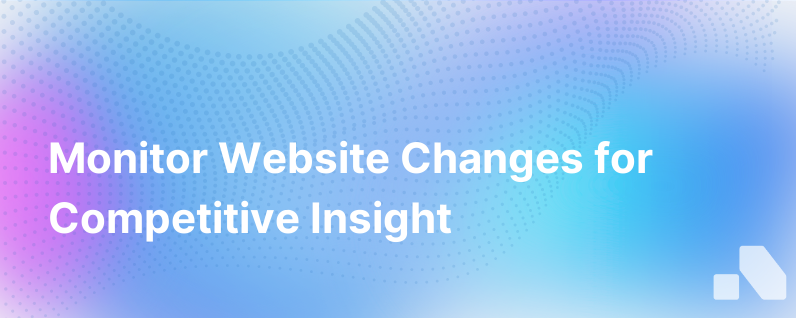
The world of e-commerce consists of constant shifts and changes, with business owners frequently making website updates to stay ahead of their competitors. Tracking these changes, whether on your own website or those of your competitors, is essential to staying attuned to the e-commerce landscape.
Uncovering the Need for Website Change Tracking
Before the advent of website change tracking tools, if a competitor made changes to their pricing, introduced new products, or revamped their sales page, it often went unnoticed until it began significantly impacting your sales. With the rise of website change tracking, competition research and monitoring have become significantly simpler.
Website change tracking software allows you to set an automated eye on any webpage you choose, and be notified when changes occur. It provides a before and after snapshot of the page for easy comparison. This technology is not just limited to monitoring competition. It also proves beneficial for SEO teams to keep tabs on their own site changes, track SERP, detect website errors, and much more.
The What and How of Website Change Monitoring
Website change tracking involves monitoring a webpage for any changes and notifying you when changes occur. Changes can encompass anything from text and images on the site to changes in HTML code, like meta tags or structured data.
Different website tracking tools employ diverse tracking mechanisms. Some perform simple visual comparison while others can detect minute changes in codes.
Selecting which webpages to track should largely depend on your tracking objectives. Here are a few cues:
- Pricing Changes: Monitor your competitor’s pricing page to stay competitive and profitable.
- Product Updates: Keep tabs on product pages to understand what products or services your competitors are focusing on.
- Promotional Offers: Tracking a competitor's homepage or specific landing pages can provide insights on their promotional strategies.
- For SEO purposes: Track your own website pages to oversee on-page SEO elements and swiftly detect technical glitches.
The Benefits of Website Change Tracking
Keeping Up with Competition: Tracking a competitor’s website changes enables you to keep a pulse on their sales strategies and respond effectively.
SEO Optimization: By tracking your own website, you can ensure your meta tags, keyword usage, structured data, and other SEO data remain optimal. Equally, detecting broken links or 404 pages quickly can save you from an SEO penalty.
Improved Customer Understanding: Tracking changes can lend insight into shifts in customer preferences, helping you adapt your products to better meet customer needs.
Identifying Trends: Observing the website changes of industry leaders can help you stay on top of evolving trends and make proactive business decisions.
How to Make the Most of Website Change Tracking?
Employing a website change tracker is just the first step. Transforming these insights into actionable strategies is what will keep you ahead of the e-commerce curve.
- Analyze Changes: Merely spotting a change is not enough. Analyze why a change was made. A sudden price drop might indicate a new pricing strategy or a clearance to make way for new products.
- Be Proactive: Don't just replicate your competitors. Develop innovative solutions to stay a step ahead. If a competitor lowers prices, think of offering added value instead of just matching their price.
- Prioritize: Some changes are more critical than others. Know which pages are most crucial for business and pay special attention to changes there.
Leveraging Automation
While it is possible to manually check websites for changes, who has the time to do so regularly? Multiple tools automate this task, scanning webpages daily, or even several times a day and alert users to any changes.
However, the process of setting up these tools, choosing which pages to monitor, and analysing notifications can still require a good deal of time and effort. This is where AI-powered platforms like Aomni step in.
Aomni simplifies this process by using artificial intelligence to monitor webpages, analyze changes and even craft action plans based on those changes. Tools like these are transforming how companies conduct competitive research, saving businesses time and driving strategic growth.
Concluding Thoughts
In the fast-paced world of e-commerce, tracking website changes is no longer optional - it's vital. Website tracking allows businesses to stay competitive, strategize proactively and understand their customers better. By leveraging tools like Aomni, organizations can automate this tracking, freeing valuable time and providing comprehensive competitive insights to make data-driven decisions.